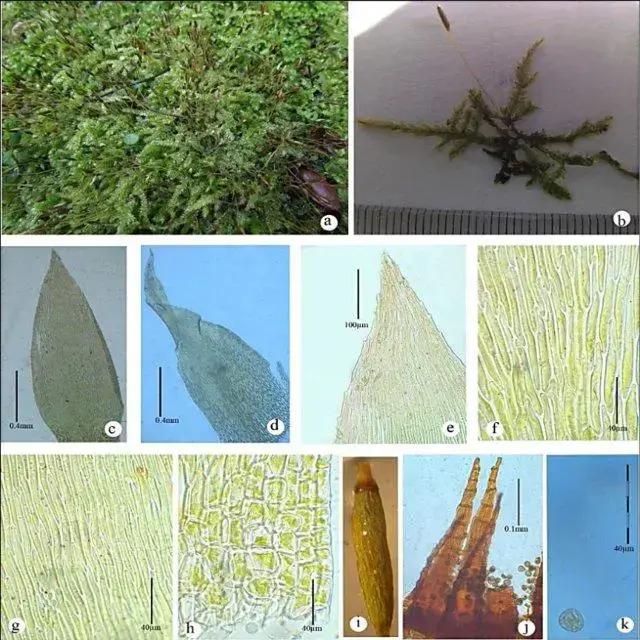Entodon-curvatirameus-A-Habit-B-Branch-C-D-Stem-leaves-E-F-Branch-leaves-G.ppm from: https://www.researchgate.net/figure/Entodon-curvatirameus-A-Habit-B-Branch-C-D-Stem-leaves-E-F-Branch-leaves-G_fig35_232693390
Introduction
In the vast and captivating world of bryophytes, the Entodon pseudoseductrix (Müll.Hal.) A.Jaeger

Entodon-macropodus-HedwMull-A-B-Habit-C-Leaf-D-Perichaetial-Leaf-E-Leaf-Tip_Q640.jpg from: https://www.researchgate.net/figure/Entodon-plicatus-MullA-B-Habit-C-Branch-Leaf-D-Stem-Leaf-E-Perichaetial-Leaf-F_fig1_344995345
moss stands out as a fascinating member of the Entodontaceae family. Also known simply as Entodon, this unassuming yet remarkable plant has captured the interest of moss enthusiasts and naturalists alike. Let’s delve into the intriguing realm of this diminutive wonder and unravel its secrets.
Background
Before we explore the specifics of Entodon pseudoseductrix, it’s essential to understand the broader context of bryophytes. These non-vascular plants, which include mosses, liverworts, and hornworts, are often overlooked but play a crucial role in various ecosystems. They are among the oldest land plants on Earth, with a rich evolutionary history dating back millions of years.
Main Content
Morphology and Identification
Entodon pseudoseductrix is a pleurocarpous moss, meaning its stems and branches grow horizontally along the substrate. Its slender, creeping stems are adorned with delicate, lance-shaped leaves that are typically 1-2 mm long. These leaves are keeled (boat-shaped) and have a distinctive double costa (midrib) that extends partway up the leaf.
One of the key identifying features of this moss is its capsules, which are cylindrical in shape and curved when mature. These capsules are borne on a reddish-brown seta (stalk) and are often inclined or horizontal.
Global Distribution and Habitat
Entodon pseudoseductrix is widely distributed across various regions, including North America, Europe, Asia, and New Zealand. It thrives in a variety of habitats, from moist and shaded forests to rocky outcrops and even urban areas.
This moss prefers acidic substrates and is commonly found growing on tree trunks, rotting logs, and soil. Its ability to colonize a range of environments is a testament to its adaptability and resilience.
Ecological Roles and Adaptations
Like many bryophytes, Entodon pseudoseductrix plays a vital role in its ecosystem. It contributes to soil formation and moisture retention, creating favorable conditions for other plants and organisms to thrive.
One of the remarkable adaptations of this moss is its ability to desiccate and revive when water becomes available. This trait, known as poikilohydry, allows it to survive in harsh and fluctuating environmental conditions.
Additionally, Entodon pseudoseductrix serves as a microhabitat for various invertebrates, providing shelter and food sources for these tiny creatures.
Case Study: Urban Moss Gardens
In recent years, there has been a growing interest in creating urban moss gardens, where bryophytes like Entodon pseudoseductrix are cultivated and appreciated for their beauty and ecological benefits. These gardens not only add a touch of natural charm to urban spaces but also contribute to air purification, noise reduction, and biodiversity conservation.
Technical Table
| Characteristic | Description |
|---|---|
| Family | Entodontaceae |
| Genus | Entodon |
| Species | pseudoseductrix |
| Growth Form | Pleurocarpous |
| Leaf Shape | Lance-shaped, keeled |
| Leaf Size | 1-2 mm |
| Capsule Shape | Cylindrical, curved |
| Seta Color | Reddish-brown |
Conclusion
The Entodon pseudoseductrix moss may be small in stature, but its impact on the natural world is profound. From its intricate morphology to its ecological significance, this unassuming plant deserves our appreciation and admiration. As we continue to explore the wonders of bryophytes, let us ponder this thought-provoking question: How can we better integrate and celebrate these often-overlooked organisms in our daily lives and urban environments?